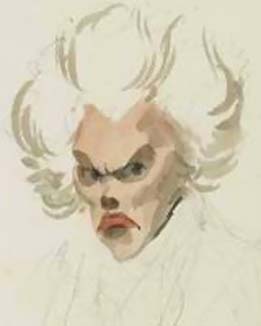<Back to Index>
- Mathematician Adrien Marie Legendre, 1752
- Painter Anton Rudolf Mauve, 1838
- Prime Minister of Canada John George Diefenbaker, 1895

Adrien-Marie Legendre (18 September 1752 – 10 January 1833) was a French mathematician. He made important contributions to statistics, number theory, abstract algebra and mathematical analysis.
Adrien-Marie Legendre was born in Paris (or possibly, in Toulouse, depending on sources) on 18 September 1752 to a wealthy family. He was given a top quality education at the Collège Mazarin in Paris, defending his thesis in physics and mathematics in 1770. From 1775 to 1780 he taught at the École Militaire in Paris, and from 1795 at the École Normale, and was associated with the Bureau des longitudes from 1813. In 1782, he won the prize offered by the Berlin Academy for his treatise on projectiles in resistant media, which brought him to the attention of Lagrange. In 1783 he became an adjoint of the Académie des Sciences, and an associé in 1785. During the French Revolution, in 1793, he lost his private fortune, but was able, with the help of his wife, Marguerite-Claudine Couhin, whom he married in the same year, to put his affairs in order. In 1795 he became one of the six members of the mathematics section of the reconstituted Académie des Sciences, named the Institut National des Sciences et des Arts, and later, in 1803, of the Geometry section as reorganized under Napoleon. In 1824, as a result of refusing to vote for the government candidate at the Institut National, Legendre was deprived by the Ministre de L'Intérieure of the ultraroyalist government, the comte de Corbière, of his pension from the École Militaire, where he had served from 1799 to 1815 as mathematics examiner for graduating artillery students. This was partially reinstated with the change in government in 1828 and in 1831 he was made an officer of the Légion d'Honneur. He died in Paris on 9 January 1833, after a long and painful illness. Legendre's widow made a cult of his memory, carefully preserving his belongings. Upon her death in 1856, she left their last country house to the village of Auteuil where the couple had lived and are buried.
The Moon crater Legendre is named after him.
Most of his work was brought to perfection by others: his work on roots of polynomials inspired Galois theory; Abel's work on elliptic functions was built on Legendre's; some of Gauss' work in statistics and number theory completed that of Legendre. He developed the least squares method, which has broad application in linear regression, signal processing, statistics, and curve fitting. Today, the term "least squares method" is used as a direct translation from the French "méthode des moindres carrés".
In 1830 he gave a proof of Fermat's last theorem for exponent n = 5, which was also proven by Dirichlet in 1828.
In number theory, he conjectured the quadratic reciprocity law, subsequently proved by Gauss; in connection to this, the Legendre symbol is named after him. He also did pioneering work on the distribution of primes, and on the application of analysis to number theory. His 1796 conjecture of the Prime number theorem was rigorously proved by Hadamard and de la Vallée-Poussin in 1898.
Legendre did an impressive amount of work on elliptic functions, including the classification of elliptic integrals, but it took Abel's stroke of genius to study the inverses of Jacobi's functions and solve the problem completely.
He is known for the Legendre transformation, which is used to go from the Lagrangian to the Hamiltonian formulation of classical mechanics. In thermodynamics it is also used to obtain the enthalpy and the Helmholtz and Gibbs (free) energies from the internal energy. He is also the namegiver of the Legendre polynomials, solutions to Legendre's differential equation, which occur frequently in physics and engineering applications, e.g. electrostatics.
Legendre is best known as the author of Éléments de géométrie, which was published in 1794 and was the leading elementary text on the topic for around 100 years. This text greatly rearranged and simplified many of the propositions from Euclid's Elements to create a more effective textbook.